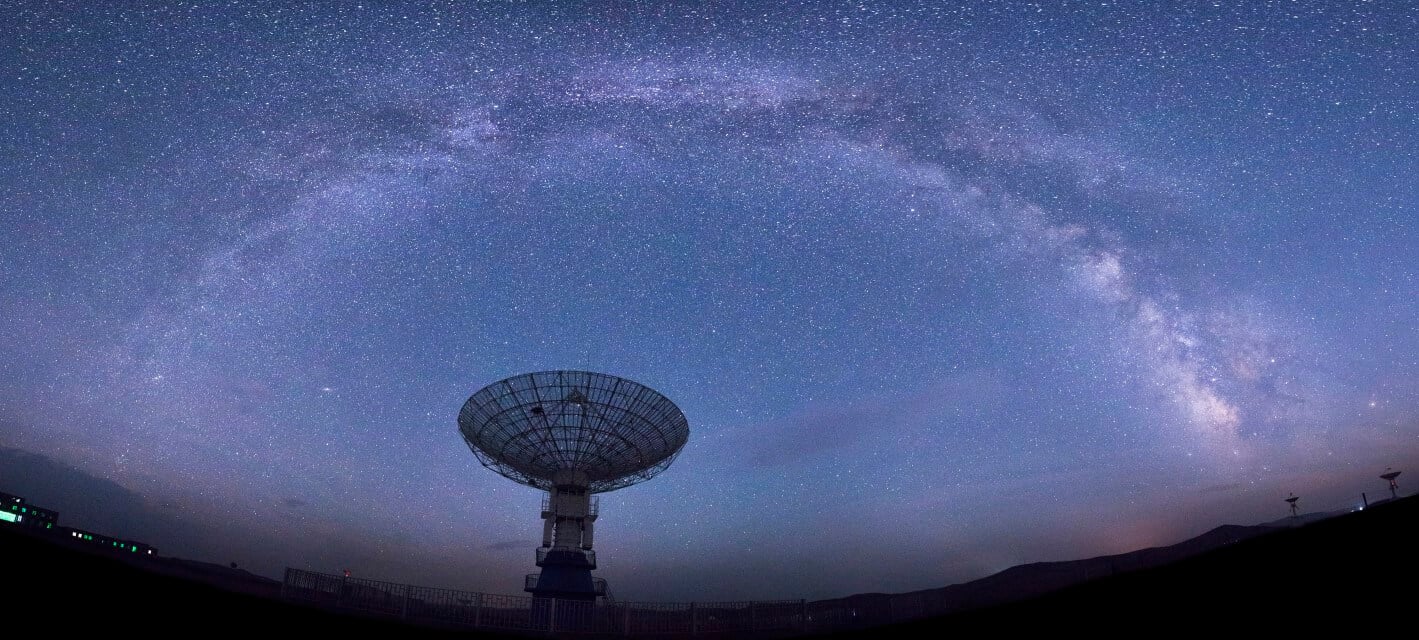America is a wonderful destination for space fans. With a rich and legendary history in space exploration and science, there are many sites of significance to historical and modern space flight and discovery. From the launch sites of Florida to the historic sites of Texas and awesome stargazing spots across the country, join us for an out-of-this-world look at the best sites in the USA for space lovers.
Observatories
Observatories are perhaps the best places to get first-hand experience of how modern astronomy is changing our understanding of the Universe. Visiting an observatory is your chance to get your hands on some proper astronomical equipment, including state-of-the-art telescopes. Many visitor observatories also offer the chance to do some observing of your own. They are staffed by professional astronomers and educators who are passionate about sharing their love of space.
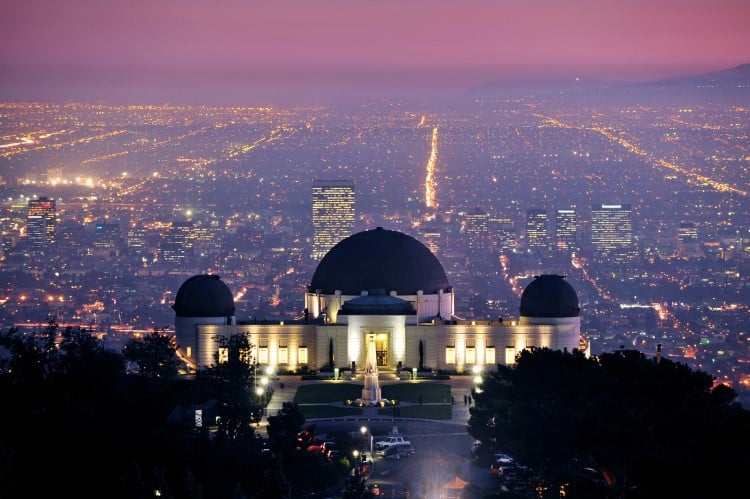
Griffith Observatory, Los Angeles
Perhaps the most famous observatory in America, the grand Griffith Observatory occupies an incredible spot in the Hollywood Hills. It has unbeatable views of both the land and the sky and overlooks the sprawling cityscape of Los Angeles. Griffith Observatory is a must-visit for space lovers, offering one of the most engrossing intergalactic experiences to be found anywhere in the world. Along with permanent exhibits and fascinating displays of scientific instruments and discoveries, Griffith Observatory also offers plenty of opportunities to get involved with astronomy. Monthly star parties are a calendar highlight. Visitors can use the observatory’s powerful telescopes to observe planets, moons, and nebulae in the Northern hemisphere sky. The observatory also hosts sunset walks and talks, as well as one-off lectures and events. Check out the Griffith Observatory calendar for upcoming events.
The Griffith Observatory is open on Fridays, Saturdays, and Sundays. On Fridays, doors open at 12 noon and close at 10 pm. On Saturdays and Sundays, the observatory opens from 10 am to 10 pm. Entry is free, although the parking near the observatory is charged for.
Lowell Observatory, Flagstaff Arizona
Lowell Observatory has a pretty impressive claim to fame. It was here, in 1930, that Clyde Tombaugh discovered Pluto. It might not be a planet anymore, but the discovery is still one of the most significant of the last 100 years. Visitors to the Lowell Observatory can still marvel at the beautiful space where the 23-year astronomer first spotted the dwarf planet. The Lowell Observatory offers talks and guided tours of the facility and also the ‘Pluto Room’. Expert guides give visitors insight into the historical and scientific significance of the site. There is also the opportunity to use the observatory’s magnificent telescopes, for both solar and nighttime viewing, when the clear skies of Arizona might reveal wonders such as planets, gas clouds, and distant galaxies.
Entry to the Lowell Observatory costs $25 for over-18s and $16 for under-18s. The observatory is open 7 days a week from 10 am until 10 pm, except for on Tuesdays when it closes at 5 pm (ticket prices are lower on Tuesdays to reflect this). The cost of your entry includes access to all tours and events on-site.
McDonald Observatory, Texas
The McDonald Observatory, which is part of the University of Texas at Austin, has played a major role in the exploration and discovery of space. Shortly after Neil Armstrong took his giant leap onto the surface of the Moon in 1969, the McDonald Observatory was tasked with firing a laser at the reflector that was left on the lunar surface by the astronauts. This allowed scientists to measure the Earth-Moon distance with incredible accuracy, paving the way for future missions and discoveries. The observatory has continued to contribute to modern astronomy and space exploration. Achievements include the search for dark matter and the discovery of the first planet orbiting a binary star. Visitors to McDonald Observatory can take part in viewing evenings, tours, and star parties in one of the most beautiful dark sky areas in the southern United States.
The McDonald Observatory is open to the public from Tuesday – Saturday, between 12 pm and 5 pm. The site is a working research center, so visitors need to sign in at the Frank N Bash Visitor Center. Check the observatory calendar for event details and availability.
Science centers and museums
With numerous exhibits and fun things for the whole family, visiting a science center or museum is a fantastic way to check off your need for space stuff, while still having plenty to entertain other members of your group who perhaps have different interests. They are also a fantastic way to get kids involved in space and science, with plenty of interactive activities and talks to get stuck into. America is home to some world-class museums and science centers, from Florida to California and everywhere in between.
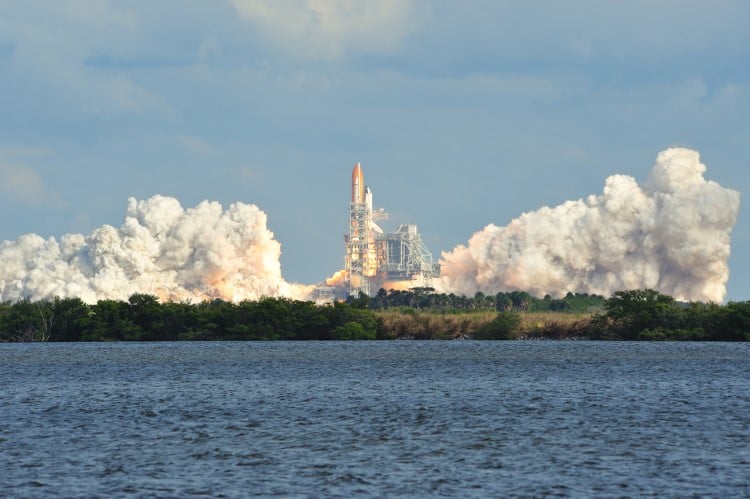
Pima Air and Space Museum, Tucson Arizona
One for fans of all things aviation, Pima Air and Space Museum has got a truly impressive collection of air and spacecraft from throughout history. Some of the museum’s star attractions include NASA satellites, a vast collection of decommissioned military aircraft, and the legendary ‘Boneyard’, where hundreds of planes stand sentinel in rusting rows in the Arizona desert, being gradually worn away by the thrashing sand and wind. You can no longer visit the Boneyard up close, but you can still see the tails of the planes rising out of the desert. You can take guided tours of the museum hangars where the majority of the aircraft are stored, or book a tram tour, giving you a narrated ride around the entire facility. Tickets for the tram tour cost $8, and are available from Thursday to Sunday.
The Pima Air and Space Museum is open all year, apart from Christmas and Thanksgiving. Opening hours are 9 am to 3 pm during the summer months (from June to September), and from 9 am to 5 pm the rest of the year. Admission costs $18.50 for over 13s for a one-day ticket.
Flandrau Science Center and Planetarium
Part of the University of Arizona, the Flandrau Science and Center and Planetarium is one of the top places to visit for families who want a fun and hands-on day out in Tucson. The star attraction is the planetarium, where you can enjoy a schedule of immersive and awe-inspiring laser and projection shows, with topics spanning everything from black holes and the solar system to the music of Queen and great white sharks. Elsewhere in Flandrau, you can marvel at exhibits including Destination: Mars which features the world’s largest scale model of the Martian surface, and a meteorite from Mars itself.
The Flandrau Science Center is open from Tuesday – Sunday, from 10 am to 5 pm. Admission costs $9 for adults and $7 for children (ages 4 – 17).
Orlando Science Center
If you want a change from the theme parks of Orlando, take the family to the Orlando Science Center, where a different kind of entertainment is waiting for you. With a vibrant variety of exhibits including Our Planet, Dino Digs, and Florida’s largest public access refractor telescope, there is plenty to keep kids (and big kids) entertained for the whole day. Orlando Science Center also hosts several themed events, with talks and interactive exhibits aimed at both adults and kids, to inspire learning and enjoyment of our planet and the worlds beyond.
Advanced, timed-entry tickets are required to visit the Orlando Science Center and can be purchased from the website. Tickets cost $21 for adults and $15 for youth.
Chabot Space and Science Center
Located within the spectacular Redwoods National Park, Chabot Space and Science Center is one of California’s best places to visit for space and science fans. The science center hosts fun and many interactive activities, including free telescope viewing sessions, The Nasa Experience, and solar explorations.
The Chabot Science and Space Center opens on Saturdays and Sundays from 10 am to 5 pm. For over 12s, it costs $24 to enter, while for kids and seniors, it’s $19.
Kennedy Space Center, Orlando
The thundering roar of a space launch is a bone-rattling, unforgettable experience quite unlike anything else on Earth. You can experience the incredible rush of seeing a live rocket launch at Kennedy Space Center, one of the most iconic places in the history of space exploration. This immersive and entertaining facility offers much more besides a front-row seat to the latest launches; visitors can also explore exhibits and spacecraft used in actual missions, including the majestic Saturn V rocket.
The Kennedy Space Center is open 7 days a week, from 9 am – 5 pm. Daily admission costs $57 for adults and $47 for kids. Tickets can be booked online in advance.
Space Center, Houston, Texas
The Space Center in Houston is one of the most important space education facilities in America. The center houses exhibits featuring historic and contemporary spacecraft. One of only two SpaceX Falcon 9 boosters on display anywhere in the world is in the center. Keen space buffs can also take a look behind the scenes of the world-famous NASA’s Mission Control center. The center also houses the world’s largest collection of genuine moon rocks.
The Space Center in Houston is open all week, between 10 am and 5 pm. Tickets cost $29.50 for adults and $24.95 for under 11s.
Best places to stargaze in America
Sometimes, the best way to explore space is to simply look up and admire the misty swathes of stars glimmering against the velvety backdrop of a navy night sky. America is vast, and consequently, there are plenty of fantastic places unburdened by light pollution where you can see millions of stars.
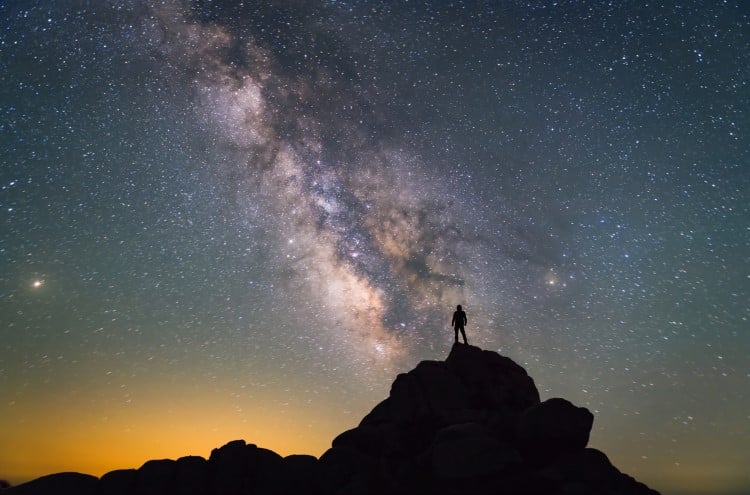
Bryce Canyon National Park, Utah
Bryce Canyon in the hot, dry Utah plains is one of America’s best places for stargazing. It has the oldest astronomy course of any national park. On the course, visitors to explore the endless night sky with telescopes and a knowledgeable guide. Even without the aid of optics, astronomy is indeed great here. On a clear night, you can easily see the Milky Way, constellations, and also planets with the naked eye.
Glacier National Park, Montana
As if Montana’s famous landscapes weren’t breathtaking enough by day, when the sun sets, the sky comes alive with countless stars igniting the cosmos above a glorious landscape of mountains, forests, and lakes. The stargazing is so good here because there is essentially no light pollution. This means that you can see the sky in its full glory. The Milky Way is often visible, and, when luck and solar activity are on your side, the magnificent Northern Lights are also visible from the park.
Big Pine Key, Florida
Florida and stargazing don’t always go hand-in-hand. The bustling, blinding cities of the Sunshine State cause a lot of nighttime light pollution, making it hard to see anything but the very brightest stars. However, there is a place called Big Pine Key, where the night skies are gloriously clear. Big Pine Key is an island in Florida’s Lower Keys. It is far enough from the mainland that it isn’t as affected by the city lights. Big Pine Key is also a special place for stargazers, as it is the only place in the USA from where you can spot the Southern Cross. This beautiful constellation is one of the most recognizable in the Southern Hemisphere.
Chaco Culture National Historical Park, New Mexico
There is something very special about stargazing in a historic place, knowing that you are gazing up at the same sky that our ancestors did many, many years ago. It’s even better when you’re surrounded by some of the most incredible landscapes that the world has to offer. You can experience that sense of wonder at Chaco Culture National Historic Park in New Mexico. Many astronomers consider it to be one of America’s best places for stargazing. The region is a designated International Dark Sky Reserve. This means that it is protected from development that would cause light pollution.
Rocky Mountain National Park, Colorado
The Rocky Mountains is home to some of the most breathtaking landscapes in America. The picture only improves after dark. Framed by rugged mountain peaks and thick forest canopies, the universe looks particularly stunning against this wild Colorado backdrop. The remote wilderness location and easy access to high altitude areas make the Rocky Mountains National Park a must-visit place for keen astronomers and curious stargazers.
Death Valley National Park, California
As the largest designated Dark Sky Park in America, Death Valley guarantees spectacular skies in addition to beautiful landscapes. Stunning views of the cosmos are a sure thing on a clear night from anywhere in the park. If you want a bit more guidance, there are stargazing events in the winter and in the summer.
Grand Canyon National Park, Arizona
Is there any way in which the Grand Canyon could be any more breathtaking? How about when it’s illuminated by a ceiling of starlight? There’s long been a saying that in the Grand Canyon; ‘Half the park is after dark’. To see this iconic wonder once the Sun goes down is a completely different experience than during the day. There are many places to view spectacular night skies at the Grand Canyon, which is another Dark Sky Park.
Space-themed bars and restaurants
Even space explorers need to refuel. If you fancy something more than freeze-dried astronaut food, these space-themed bars and restaurants are ideal.
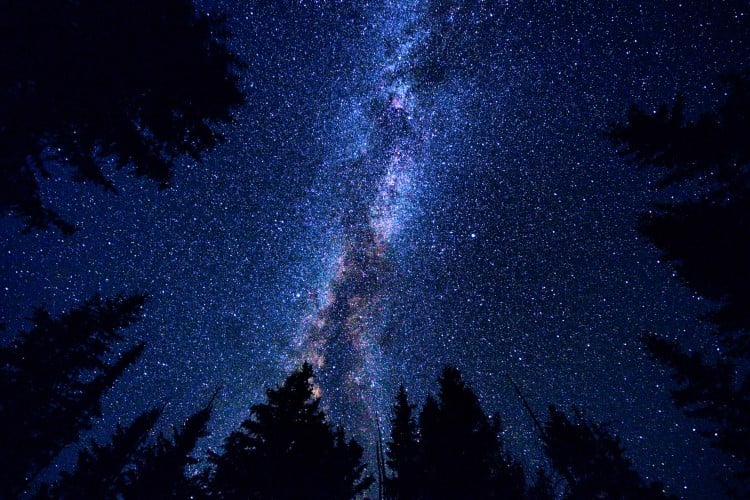
Sky Bar, Tucson Arizona
For an unforgettable astronomical evening out, head to the Sky Bar in Tucson. This unique venue is a solar-powered cafe by day and an astronomy bar by night. Once the Sun sets, you can enjoy a cocktail made by solar power while using the bar’s onsite telescopes to explore the night sky.
Scum and Villainy Catina, Hollywood
So this one is a little more ‘science fiction’ than science fact, but it’s so much fun for space fans that we couldn’t resist including it! Inspired by the famous Mos Eisley Cantina from A New Hope, this bar is a Star Wars superfan’s dream destination. What makes the cantina special is the number of costumed patrons that it attracts. How often do you see 2 stormtroopers walk into a bar, or grab a cocktail with Emperor Palpatine?
Space 220, Disney World, Orlando
One of Epcot’s newest and most popular eateries is Space 220. This out-of-this-world restaurant experience takes you into orbit as you feast on intergalactic food with a view of our own blue marble spinning below.
Villas with space-themed rooms
Need a stellar place to stay while on vacation? We have stunning vacation rentals across America, including beautiful villas with space-themed rooms in Orlando. Find and book accommodation on our website.

